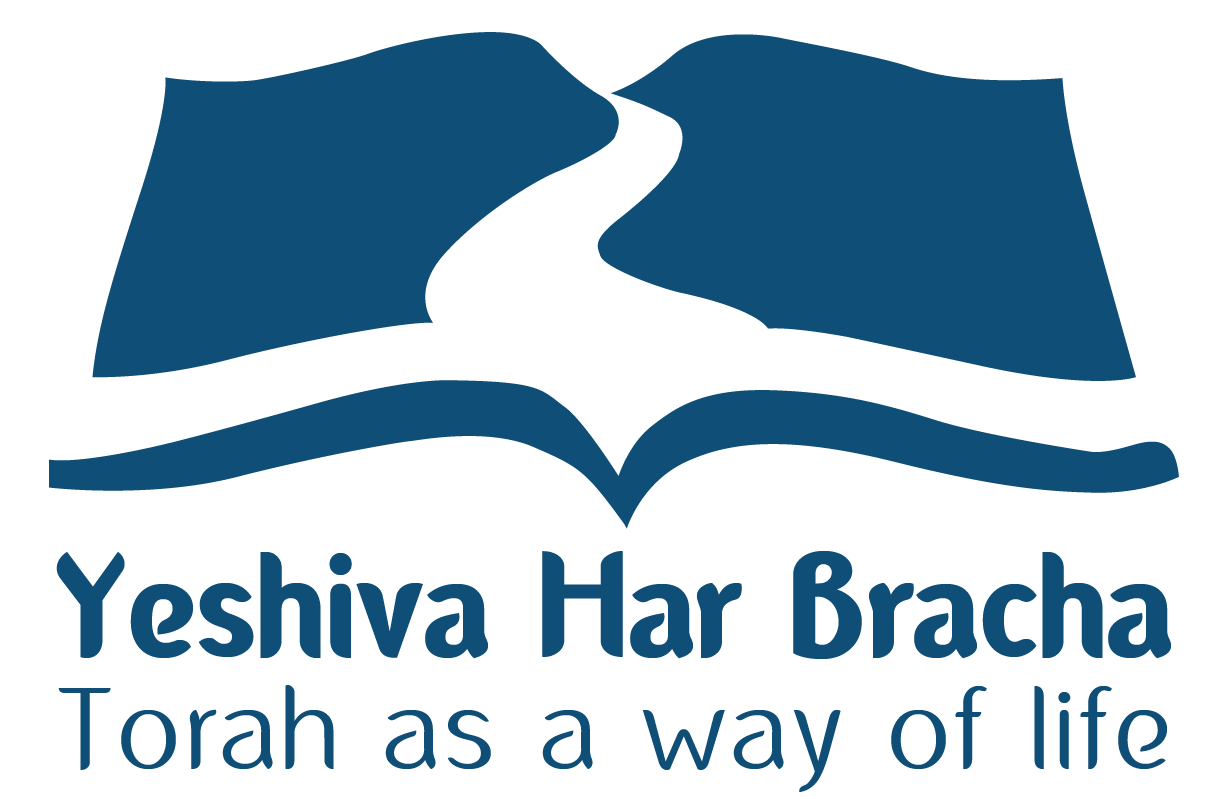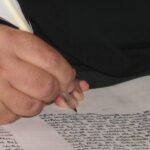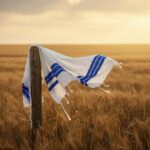When the 14th of Nisan falls on Shabbat, the chametz is checked with a blessing on the night of the 13th of Nisan * On Friday, the chametz is burned * To ensure that the chametz is eaten within the permitted time, Shacharit should be prayed earlier than usual * If there are only small remnants of chametz, they can be disposed of by flushing them down the toilet * The third meal is observed with meat, fish, or fruit * Care must be taken not to prepare anything on Shabbat for Yom Tov
This Year’s Unique Sanctity
This year, Pesach begins directly from the holiness of Shabbat, which has a special significance, allowing us to absorb the meaning of Pesach more deeply. However, this year requires special halachic considerations.
Bedikat Chametz (Checking for Chametz) and Its Disposal
The usual time for checking for chametz is the night of the 14th of Nisan, but when the 14th of Nisan falls on Shabbat, the check is done on the night of the 13th. After the check, the chametz that was not found is nullified, as in every year.
The next day, on Friday, the chametz that was found is burned, and it is preferable to burn it before midday (the 6th hour), just like in a regular year, to avoid confusion in future years. Unlike other years, the chametz nullification statement is not recited immediately after burning, since some chametz must be kept for the first two meals of Shabbat.
Kashering utensils is permitted all day Friday.
Fast of the Firstborn
In most years, the Fast of the Firstborn falls on the 14th of Nisan. However, when it falls on Shabbat, it is moved to Thursday, the 12th of Nisan. Today, nearly all firstborns fulfill the fast by participating in a siyum (completion of a Talmudic tractate) instead of fasting.
Preparations for the Seder Night
To avoid delays in the Seder, it is best to prepare everything possible on Friday: cooking the dishes, preparing the charoset, maror, and zeroa, and storing them in the refrigerator. After Shabbat ends, they can be removed from the fridge, as preparing on Shabbat for Yom Tov is forbidden.
The Challenge of Shabbat Meals on Erev Pesach
In most years, after burning the chametz, no chametz remains in the house. However, this year, we must still observe three Shabbat meals, the first two of which require bread.
If it were permitted to eat matzah on the eve of Passover, it would be reasonable to assume that, in order to avoid issues with chametz, we would eat matzah during the Shabbat meals. However, our Sages forbade eating matzah on the eve of Passover so that the matzah would be cherished at the time of its mitzvah. Therefore, we must find a way to fulfill the mitzvah of the Shabbat meals, while also ensuring that no chametz crumbs come into contact with Passover utensils and Passover foods.
The Solution
The common practice is to cook only kosher-for-Pesach foods for Shabbat. The first two meals begin with chametz bread, eaten with a spread or fish, using chametz dishes or disposable plates. After finishing the chametz, the area is cleaned, and the meal continues using Pesach utensils.
An easier method is to eat the bread portion in a separate location, such as the living room or balcony, and then switch to the Pesach dining area after cleaning hands, clothes, and the floor of all chametz crumbs. Birkat Ha’Mazone (Grace after meals) is recited where the meal ends.
Deadline for Eating and Disposing of Chametz
By Torah law, chametz is forbidden from midday on the 14th of Nisan. However, the Rabbis prohibited eating chametz two hours earlier, meaning chametz may only be eaten until the end of the 4th hour of the day.
There are two opinions on how to calculate this time:
- Magen Avraham: Hours are counted from dawn (first light).
- Vilna Gaon & Most Authorities: Hours are counted from sunrise.
Since this is a Rabbinic law, the lenient opinion is followed:
- Final time for eating chametz (in Israel): 10:30 AM (for stringency: 10:00 AM)
- Final time to derive benefit from chametz: 11:35 AM (for stringency: 11:20 AM)
To finish on time, Shacharit should be prayed earlier than usual.
Nullifying Chametz during the Morning Meal
Often, the final time for eating chametz occurs during the morning meal, and then one begins the nullifying process. Therefore, after finishing the bread portion, but before continuing to eat kosher for Pesach foods in utensils and in an area kosher for Pesach, one must:
- Shake off any crumbs from clothes.
- Brush teeth thoroughly.
- Clean the eating area.
- Collect and dispose of all remaining chametz.
- If only small crumbs remain, they may be flushed down the toilet.
If there is more, it should be discarded in the public garbage bin, even if it is located inside the building, since by disposing of it there and reciting the Bitul Chametz (nullification of chametz), one renounces ownership and eliminates it. It is proper to render the chametz inedible beforehand by applying soap (see Peninei Halakha: Pesach 5:5).
Chametz dishes:
- If disposable, throw them away in a public garbage bin.
- If one ate with ordinary utensils, wash them, and store them away for Pesach.
After disposal, the chametz nullification statement is recited, and in this way, the chametz is completely eliminated, both in action and in thought.
What to Eat for Seudat Shlishit (the Third Meal)
Even though, ideally, the third meal should be held with bread, on the eve of Passover that falls on Shabbat, we cannot hold it with bread, since chametz is prohibited for consumption already two hours before midday, and matzah is forbidden to eat all day. Therefore, the third meal is fulfilled with meat and fish, or types of fruit (Shulchan Aruch 444:1).
Time of the Third Meal
The time for the third meal is half an hour after midday—13:15. Ideally, one should finish eating the third meal within three hours after midday, in order to enter the holiday with an appetite. If, after the fact, one did not manage to do so, they should still hold the meal even in the hours close to the holiday, while trying to minimize eating (Rema 529:1; Mishnah Berurah 8).
Eating Kosher for Passover Mezanot in the Third Meal
One who wishes to eat mezanot in the third meal may eat kneidlach (cooked patties made from matzah meal). Regarding baked cake made from matzah meal, the halachic authorities are divided. Some say that since it is made from matzah meal, just as it is forbidden to eat matzah on the eve of Passover, cake made from matzah meal is also forbidden (Gra, Rav Kook, Chazon Ovadia). Others permit it, since this cake no longer has the form of matzah, and its blessing is “Mezonot” rather than “Hamotzi” (this seems to be the opinion of the Rema 471:2 and Mishnah Berurah 19-20). And since this is a rabbinic law, one who wishes to be lenient may do so.
Matzah Ashira (Rich Matzah)
Matzah ahira is made from flour mixed with fruit juice, instead of water. In principle, matzah ashira is not chametz. While Sephardim traditionally eat it, Ashkenazim avoid it due to various concerns. However, nowadays, doubts have arisen regarding the kashrut of matzah ashira produced in factories, since it has been discovered that water is sometimes mixed into the product, raising a concern of leavening. Therefore, many are stringent about this today, even among Sephardic Jews. (Peninei Halakha: Pesah 8:1).
Not Preparing on Shabbat for Yom Tov
One must be careful not to prepare anything from Shabbat for the holiday, since Shabbat is designated for holiness and rest, and not for making preparations for another day. Anyone who exerts effort on Shabbat to prepare something for a weekday, or for a holiday, diminishes its honor (see Peninei Halakha: Shabbat 22:15-16).
Therefore, it is forbidden to wash dishes that became dirty on Shabbat in order to use them on the holiday; they may only be washed after Shabbat has ended for the purpose of the holiday meal. Similarly, it is forbidden to clean the table in honor of the holiday, but it is permitted to clean it so that it remains orderly for Shabbat, even though this will incidentally benefit the holiday.
It is permitted to sleep on Shabbat to gather strength for the Seder night, but ideally, one should not explicitly state that this is the purpose of sleeping. However, there is no prohibition in this, since the primary prohibition is speaking on Shabbat about something that is forbidden to do on Shabbat. Additionally, such speech does not greatly detract from the honor of Shabbat, as it is for the sake of a mitzvah.
One who goes to the synagogue early is permitted to take a holiday machzor and study it a little on Shabbat, thereby ensuring that taking it serves a purpose for Shabbat as well.
Preparations for the Seder Night Meal
Contemporary halachic authorities disagree regarding the permissibility of taking food out of the freezer on Shabbat for the Seder night meal. In practice, in pressing circumstances—when waiting until after Shabbat ends would cause distress and a significant delay to the meal—it is permitted to remove the food on Shabbat. However, without a great need, one should be stringent and not remove food from the freezer for the holiday (Peninei Halakha: Mo’adim 2:12).
Lighting Holiday Candles
It is forbidden to light the holiday candles before tzeit hakochavim (nightfall). One must wait until after Shabbat ends, at which point the woman should say: “Baruch hamavdil bein kodesh le-kodesh” (“Blessed is He who differentiates between one holy day, and another”), and then light the candles.
Since it is forbidden to create a new flame on a holiday, a 24-hour candle must be prepared before Shabbat so that the holiday candles can be lit from it. If one did not prepare such a candle, one should ask neighbors for a flame to light the holiday candles.
It is permitted to remove wax residue from the candleholder’s socket using a knife if it obstructs the placement of a new candle. Likewise, it is allowed to remove a metal disc that has adhered to the bottom of a glass cup where neronim (small oil candles) are placed. Additionally, it is permitted to insert a floating wick into its cork float.
However, it is forbidden to soften a wax candle by heating it in order to stick it into the holder, due to the prohibition of memare’ach (smoothing). Similarly, one may not cut or shave down the base of a candle to fit it into the holder, as this violates the prohibition of mechatech (cutting to size) (Peninei Halakha: Mo’adim 2:3).
Kiddush on Seder Night
The Kiddush on Seder night incorporates Havdalah (the distinction between one holy day and another), and a blessing over a flame. Ideally, one should recite the blessing over two adjacent candles or two closely held matches to create a greater light. (Afterward, one must be careful not to extinguish the matches, but rather, let them burn out on their own.) If necessary, one may also recite the blessing over a single candle (Peninei Halakha: Shabbat 8:6).
This article appears in the ‘Besheva’ newspaper and was translated from Hebrew.








